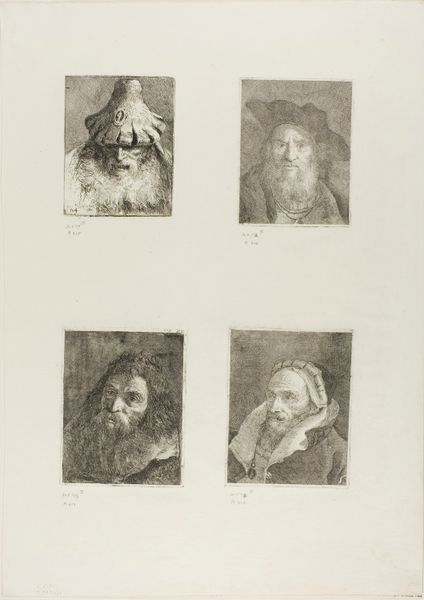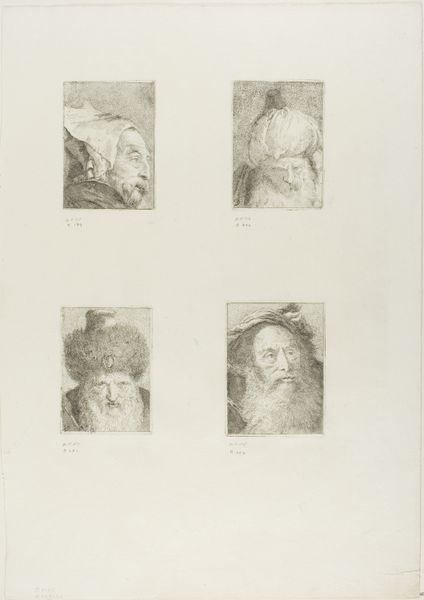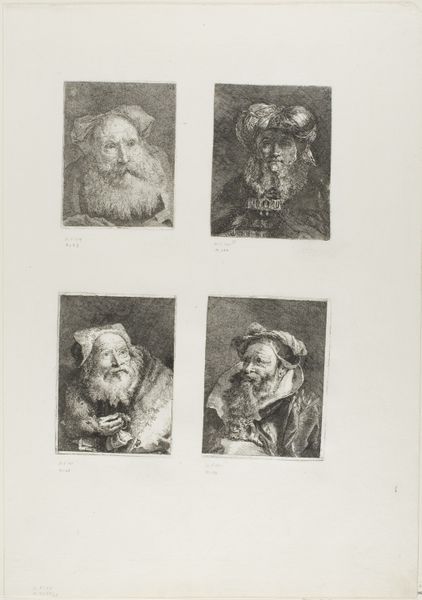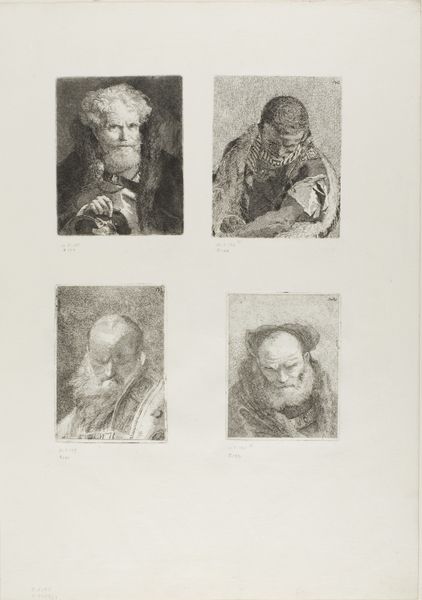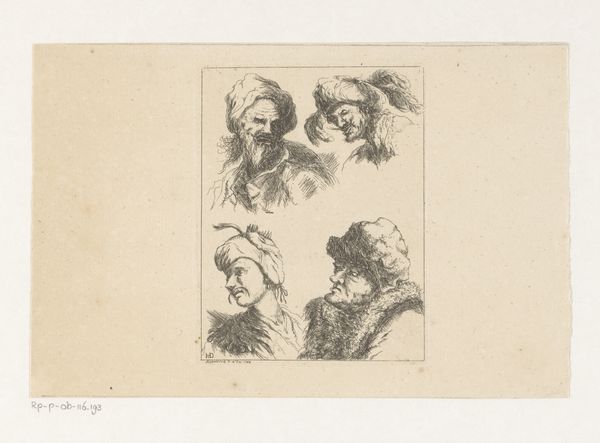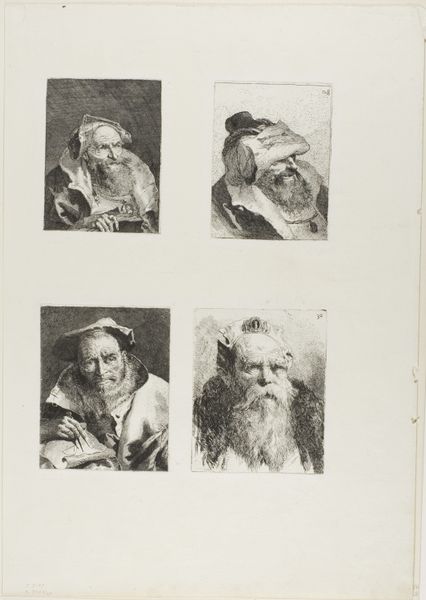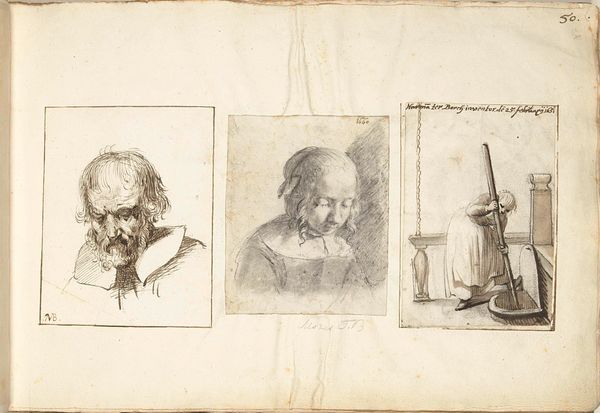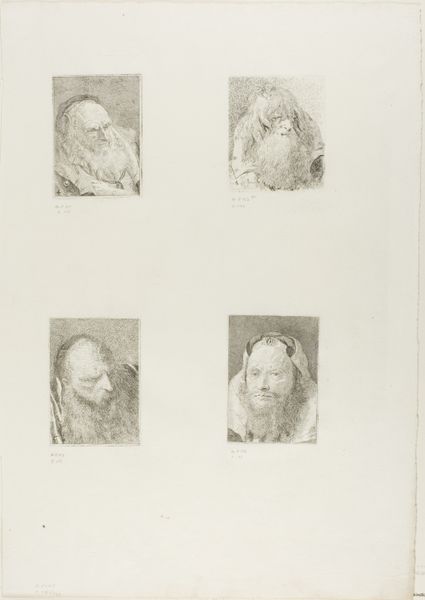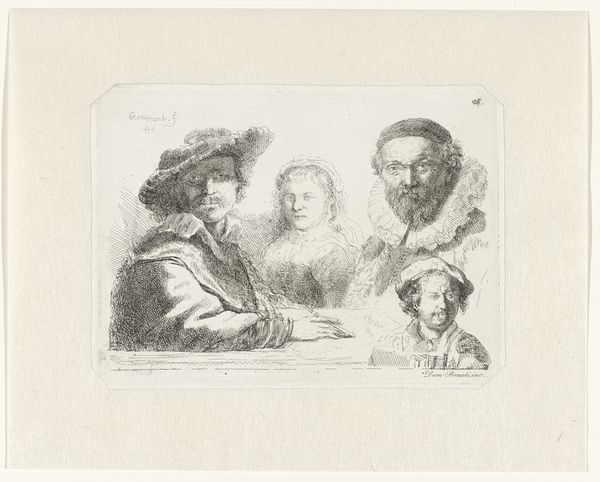
Old Man with a Bare Head, A Pope with a Jug, Old Man with a Bare Head, Old Man with a Beard 1775
0:00
0:00
drawing, print, etching, paper
#
portrait
#
drawing
# print
#
etching
#
paper
#
history-painting
#
academic-art
Dimensions: 139 × 110 mm (image/plate, upper left); 144 × 108 mm (image/plate, upper right); 145 × 115 mm (plate, upper right); 148 × 110 mm (image, lower left); 152 × 113 mm (plate, lower left); 145 × 118 mm (image/plate, lower right); 547 × 385 mm (sheet)
Copyright: Public Domain
Editor: Here we have Giovanni Domenico Tiepolo's "Old Man with a Bare Head, A Pope with a Jug, Old Man with a Bare Head, Old Man with a Beard," an etching on paper from 1775. There's something intensely private and human about these small portraits; they're quite moving. How do you read these portrayals, especially given the context of their creation? Curator: It's powerful, isn't it? We have to see these images not as isolated portraits, but as products of their time, deeply entrenched in social and political currents. Tiepolo lived during a period of significant upheaval. The Enlightenment was challenging traditional authority. Do you think these faces, particularly the so-called "Pope," might be a subtle critique of power? Editor: That's a really interesting point! I hadn’t considered that. I was just seeing the vulnerability, especially in the etched lines around their eyes. Are you suggesting there might be a satirical edge, questioning the established order? Curator: Precisely. Look at the varying degrees of detail, the almost caricatured features of some figures. Consider also how portraits, then and now, function as signifiers of identity and status. By depicting these older men, some possibly in religious garb, Tiepolo is engaging with ideas of aging, authority, and the fragility of human power structures. How might feminist theory apply here, thinking about the historical exclusion of women from such positions of authority and representation? Editor: That’s given me a lot to consider – viewing them as active social commentary rather than just studies of elderly men. Curator: Absolutely. These works urge us to question whose stories are told, how they're told, and who gets to tell them. By thinking about history, power dynamics, and representation, we enrich our understanding of the art, society, and ourselves. Editor: Thank you; that's truly reshaped how I see this etching!
Comments
No comments
Be the first to comment and join the conversation on the ultimate creative platform.


